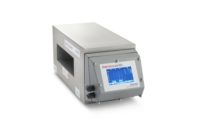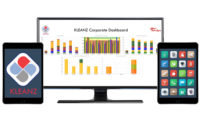The new food safety law requires that those involved in the country's food supply chain be able to trace from whom they received a food product and to whom it was sent to. The information must be maintained in a digital format, facilitating the identification of a pathogenic source of an outbreak by the Food and Drug Administration. This means major adjustments for some parts of the nation's food system.
The new federal Food Safety Modernization Act will likely require vast amounts of new data about the complicated path that food takes from field to supermarket shelf. And one portion of the new law requires that those involved in the food supply chain be able to quickly trace from whom they received a processed food product or produce and to whom it was sent to. That information must be made available in digital form, which means big changes for certain segments of the food industry, such as the smaller volume players. Government standards for electronic record-keeping could be difficult for small-volume operations that may still rely on paper invoices.
While many food processors already use traceability technology, relying on bar codes that can be affixed to pieces of fruit, shipping cases or crates, the FDA has experienced trouble quickly pinpointing the source of national outbreaks of foodborne illness, a task complicated by a lengthy food supply chain where tomatoes might change hands five times from farm to store.
This is creating a boom for technology suppliers, which see the emerging market for small-volume applications as a gold mine. FDA may, under the new law, begin launching pilot projects by the fall, but what systems will actually be needed by all involved in the food supply chain and how they will work has yet to be determined.
Source: www.washingtonpost.com
Get our new eMagazine delivered to your inbox every month.
Stay in the know on the latest snack and bakery industry trends.
SUBSCRIBE TODAY!Copyright ©2024. All Rights Reserved BNP Media.
Design, CMS, Hosting & Web Development :: ePublishing





